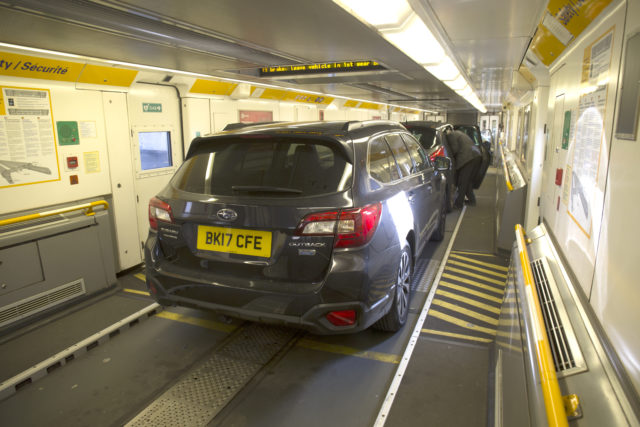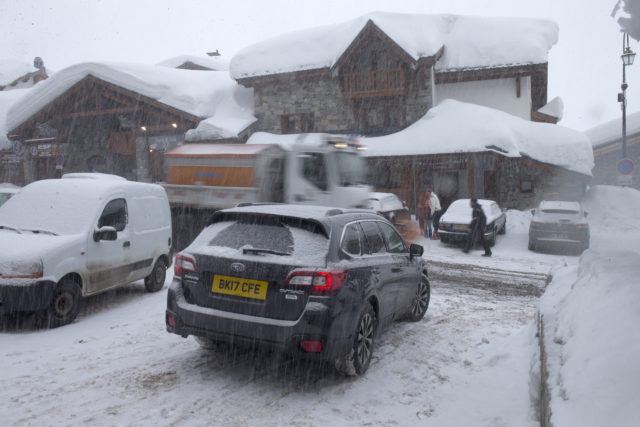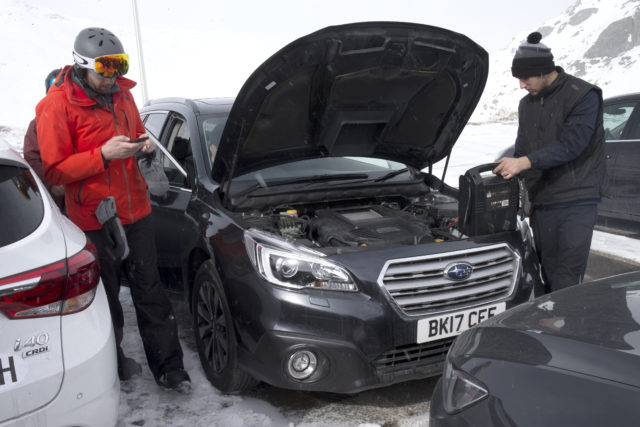Taking on the mountain in the Subaru Outback
The Subaru Outback is there for people to go anywhere and do anything. Nigel Swan found out if it could deal with snow-covered mountains

Growing up, I was fortunate enough to experience road trips to the mountains for the annual ski holiday. I remember my dad packing up the Citroen CX Safari to tackle the 1,200-mile round trip, then watching him battle with snow chains when we hit the foot of the mountain.
Thirty, ahem, something years later and now it’s me who’s packing the car and doing exactly the same road trip, but what’s changed is the wagon that’s taking us to the hill. This time round, the destination was Val Thorens, France. The car, our long-term Subaru Outback.
Now, in all honesty, my expectations were pretty high for the Outback. After all, one of its key selling points is its go-anywhere ability. In fact, if you go on to the official Subaru website (www.subaru.co.uk), there are images of it parked on gravel next to a river in a mountainous region, as well as shots of it kicking up snow on a track.

What I’ve really noticed is the more time you spend in a car on a long road trip, the more you start to see the finer details – the small things you wouldn’t necessarily spot on day-to-day commutes. Things such as the clock, which automatically changes to French time, and the Eyesight system that detects road signs, such as speed warnings, and puts them on the dash. If the car is set to miles per hour, it automatically converts the kilometres per hour road signs to mph so you can’t use the excuse of ‘I thought it was in miles per hour, officer.’
The slog to the mountains was, as usual, pretty dull, with very little to report. The ride was comfortable and relaxing, though, and we found that when driving carefully we rarely had to stop for a splash and dash – certainly a lot less often than the Honda CR-V with which we were travelling in convoy. The only slight annoyance was the wind noise, which became frustrating at higher speeds, largely around the A-pillar and wing mirrors.

Two days into the trip, though, and one of our crew suffered an issue with his foot, which essentially brought his holiday to an end. So, rather than have him sit and listen to us talking about how good the mountain was that day, I volunteered to take him on a 200-mile round trip to Geneva airport so he could catch a flight home. Now, the weather in Val Thorens was cold – in fact, it was pretty much as cold as it gets, with temperatures at night hitting -35 degrees, and this proved too much for the cars.
The battery on the Outback couldn’t handle it and it wouldn’t even try to turn on, let alone turn over. There wasn’t even enough power to lock the doors on the key fob. In all fairness, the Honda had issues too, although this was more along the lines of diesel freezing rather than batteries dying. Once the weather warmed up, the Honda started first time. The Subaru, however, needed a local mechanic to give us a jump-start and then a set of ‘just in case’ jump leads totalling nearly £100.

While we got down in one piece, there were a few ‘moments’ where we had to take evasive action because the tyres had no traction whatsoever. If we were to do the same journey again, then I’d either get some proper winter tyres fitted or put on some snow chains, just for added peace of mind.
On the final run back to the UK, I managed to spend some time in the back of the car and I found it pretty comfortable. Considering the car was three up, with skis, snowboards and luggage for a week, it was cosy, but never cramped.
Now it’s back to reality, not only for me but for the Subaru too, with a few shoots in the pipeline, which will really test its load-lugging capacity to the limits.
MODEL: Subaru Outback 2.0D Premium Lineartronic
PRICE: £34,995
ENGINE: 2.0D
POWER: 148bhp
TORQUE: 350Nm
MAX SPEED: 124 mph
0-60MPH: 9.9 secs
MPG (COMBINED) Official: 46.3mpg
EMISSIONS: 159 g/km CO2
MILEAGE (TO DATE): 13,257 miles





